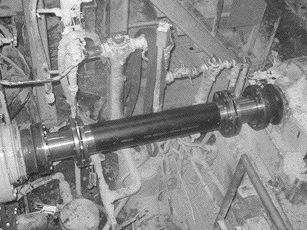
Features
Research & Innovation
On a Roll …
Yet inefficiency was plaguing the machinery that produces this essential commodity. In the paper plant, the engineer was experiencing frequent, expensive failures in the dryer section of the paper machine. Occurring typically every 90 to 180 days,...
April 1, 2004 By Pulp & Paper Canada

Yet inefficiency was plaguing the machinery that produces this essential commodity. In the paper plant, the engineer was experiencing frequent, expensive failures in the dryer section of the paper machine. Occurring typically every 90 to 180 days, these failures caused production slow-downs, equipment inefficiencies and consequent economic loss due to essential production time spent on maintenance and repairs instead.
To resolve the problem, they called in specialist Len Andersen1, who said, “Typically, the plant would utilize an entire eight-hour shift to replace a simple part. Depending on the material the plant is producing, it can cost them tens of thousands of dollars for this unexpected shutdown.”
A close assessment of the situation revealed that a small part can cause either an extensive problem or pose a massive solution. Anderson noted that the disc coupling being used was not rated for the amount of misalignment needed to respond to the natural misalignment of the application, which caused the equipment failures. In addition, that particular coupling design was difficult to install and time intensive for the plant staff to maintain.
The paper machine is comprised of two main areas, the wet area and the drying end. According to Andersen, there can be anywhere from 100 to 125 processing pumps supporting one paper machine, as well as conveyors and power systems, all requiring some type of coupling for smooth operation. The disc coupling causing trouble in the paper machine required a full eight-hour shift each time if failed for repairs. This long a period of down time required to fix or repair a part can cost a plant tens of thousands of dollars, depending on the type of material being produced. In addition, said Andersen, many paper mills don’t have the personnel to maintain the couplings and frequently, the management will contract with an outside company to perform routine lubrication services. With upwards of 100 pumps and other machines requiring lubrication, the costs add up rapidly for these contracting services as well.
One logical replacement option, a lubricated gear coupling, would still require machine shutdown for routine maintenance, and the sheer weight of the coupling increases its chances of premature breakdown and wear.
It was decided to go with a Lovejoy/Jaure disc coupling. First of all, this type of disc coupling offers superior misalignment capabilities, eliminating those previous, costly machinery breakdowns. Because it has no moving parts and therefore no parts to wear out, the paper plant has no need to lubricate the part, saving thousands by eliminating downtime for maintenance. One coupling replacement doesn’t necessarily eliminate the need for an outside lubricating contractor, however, Andersen notes that several mills in his area are rapidly advancing towards a lubrication-free plant environment, examining the current couplings utilized in pumps and power generators and replacing them with parts that require no lubrication.
The plant engineer decided to keep his current coupling but purchased the recommended disc coupling, intending to keep it in stock until their current part failed entirely. Delivery of the new part occurred just in time, as the current coupling did fail and the coupling, instead of being shelved, was installed immediately. That was three years ago and this story has yet to reach its conclusion. The disc coupling has kept this paper plant successfully pumping out smooth rolls of paper for the past three years and keeps on running. In a properly assessed engineering situation, where the parts are well aligned, the anticipated lifespan for this type of coupling is 10-12 years.
Print this page